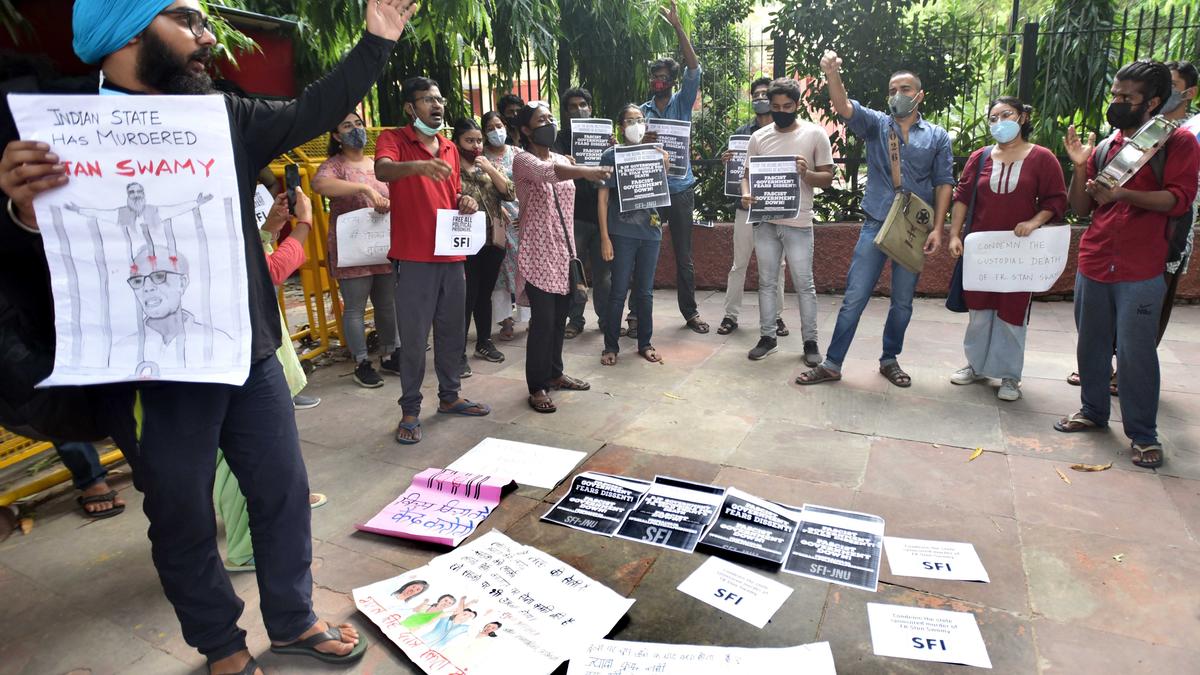
Review of Alpa Shah’s The Incarcerations: Crackdown on dissent
The Hindu
Review of Alpa Shah’s biography on the Bhima Koregaon accused ‘The Incarcerations’
How does one summarise a richly detailed and painstakingly researched 560-odd page book, The Incarcerations: Bhima Koregaon and the Search for Democracy in India, by Alpa Shah? While it narrates the story of each of the 16 accused in the case with beguiling simplicity and without any embellishments, it is not your everyday leisurely read. Its best words, the most simple yet powerful ones, come not just with the stories of each of the accused but a little before the end.
Shah opens the chapter, ‘Clipping the wings of the last bastions of democracy’, with these words: “In the ‘mother of democracy’, 16 largely unconnected people from different parts of India — from Delhi in the north to Hyderabad in the south — found themselves thrown into jail between 2018-2020, accused of being Maoist terrorists, ‘Urban Naxals’... they were all ‘custodians of democracy’.... They had fought for the social justice of India’s most vulnerable sections of society.”
Calling the Bhima Koregaon case, “a targeted state-driven attempt to silence the BK-16”, she reveals that the so-called evidence used to rally the public against the accused was fabricated, and not entirely without the blessings of those at the very top of the hierarchy. She writes, “Such is the extent of evidence tampering, that the BK case has become a landmark for research into cyber espionage.” If this is shocking, what comes later is startling. Shah reveals that the U.S.-based experts who took an interest in the cyber-data related to the BK case showed there was “a link between the police who made the arrests and those who hacked the computers”. The evidence was planted remotely through a hacker-on-hire mercenary gang infrastructure. Due to such wilful lies and sinister fabrication, the likes of Stan Swamy, Sudha Bharadwaj, Varavara Rao, Shoma Sen, Gautam Navlakha, Vernon Gonsalves, Arun Ferreira, Anand Teltumbde, Hany Babu and others found themselves behind bars for years. Swamy died in judicial custody in 2021.
Of course, part of the reason for their prolonged incarceration was the communal politics of the day. Attention was drawn to the so-called ‘Urban Naxals’ to protect instigators of a communal riot at Bhima Koregaon on January 1, 2018. In the riot, Hindutva leaders Milind Ekbote and Sambhaji Bhide stood accused of mobilising Marathas against local Dalits with the former being imprisoned for a month. Around this time, a new narrative was spun and raids were conducted on the premises of BK-16 activists alleging that they had incited the violence. Despite their protests and claims of innocence, this led to the arrest of the BK-16 activists. “The BK case provides a window into how many state institutions, including the judiciary, have come to be dominated.... The police force appears to be ready to stand back and grant a long leash to offenders, even protect them, for instance, by overlooking the alleged crimes of Milind Ekbote and Sambhaji Bhide, while at the same time, incarcerating those it wants to silence, like the BK-16.”
The Hindutva activists’ angle was soon forgotten, with the help of the mainstream media. The focus shifted to ‘Urban Naxals’, and even an alleged death threat to the Prime Minister. Shah writes that the mainstream media was propagating the government’s version of events. “This was clear in the media trials that dramatically flashed the fabricated Modi assassination plot letter across the country, and declared the BK activists to be guilty before the matter even reached the courts. Those media outlets which challenged the regime’s version of events were targeted in order to be silenced.”
The BK-16 case was much more than a targeted attack on supposed Maoists. It was meant to send a strong signal to anyone daring to speak up. “Comply with the regime, hide inside your shell, or else you too may find yourself in jail,” is Shah’s brief analysis of the events.
One may never know why these activists who did not know each other until after their arrests were linked together by the state apparatus. But there were common threads of speaking for justice, for Dalits, Adivasis and Muslims. This emerging alliance of the weak, vulnerable and the marginalised had to be nipped in the bud.











